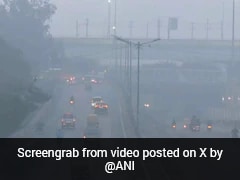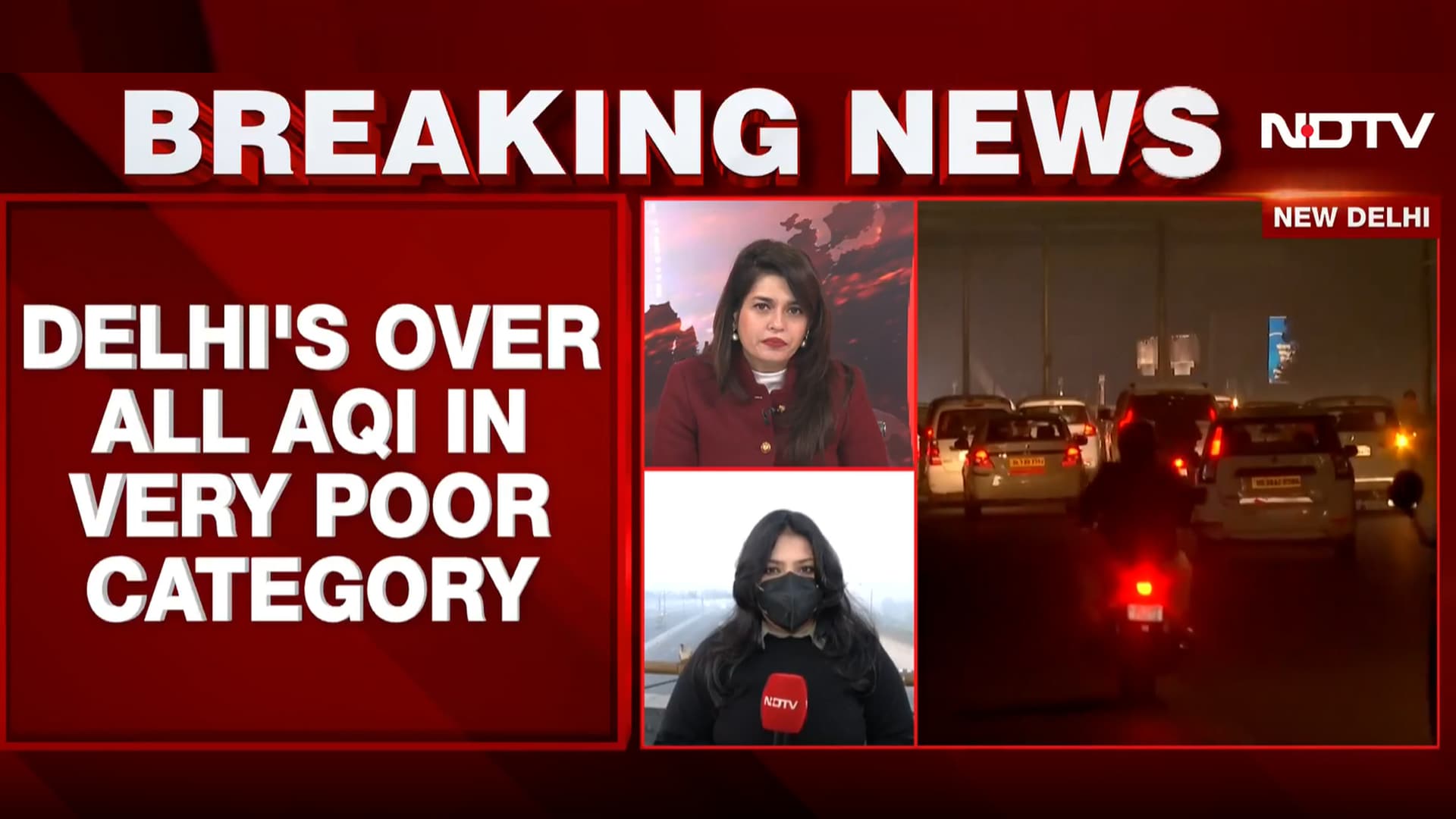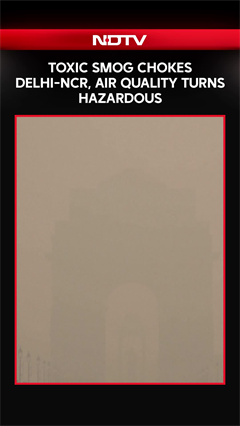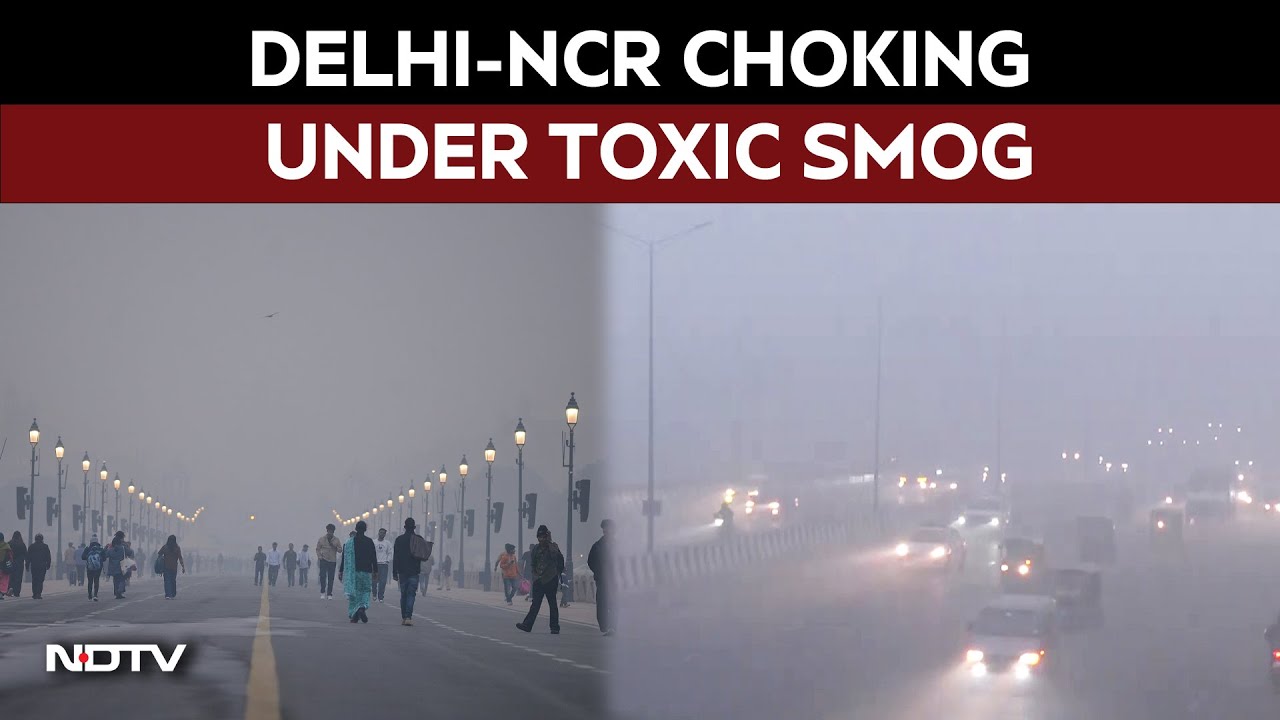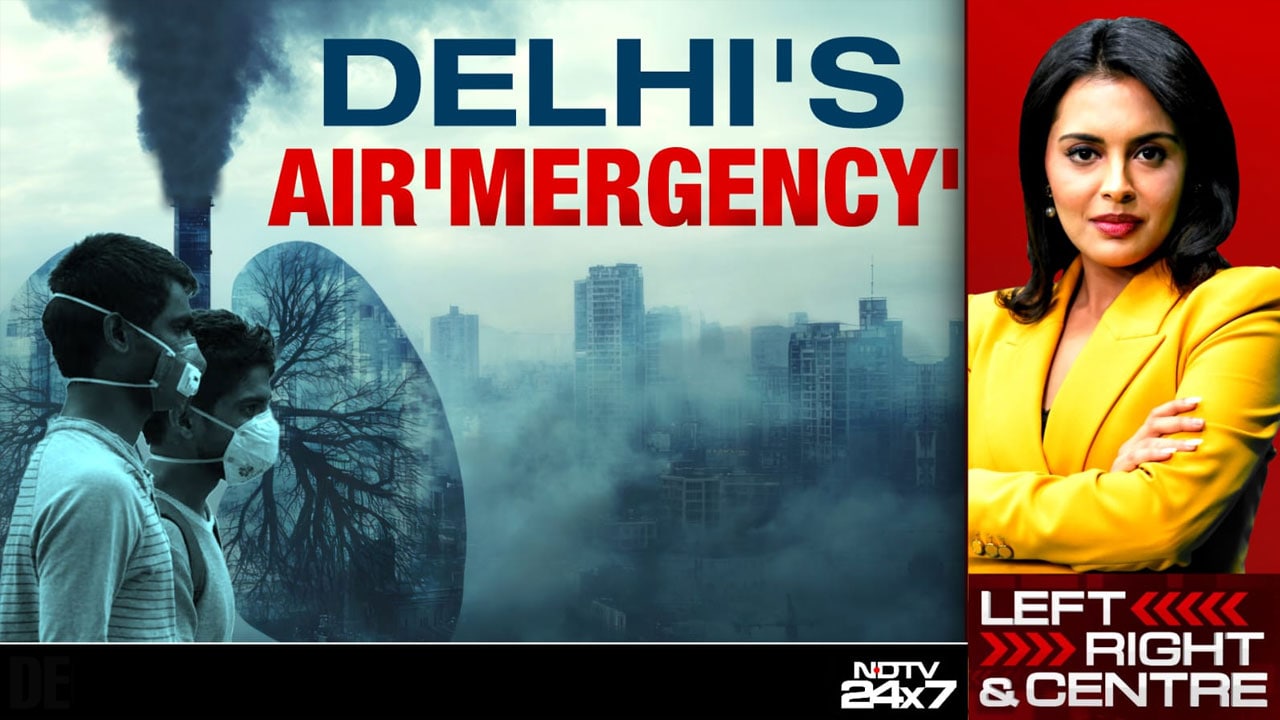- Home/
- Delhi-NCR AQI Nears 'Severe' Levels In Several Areas; Average Remains 362
Delhi-NCR AQI Nears 'Severe' Levels In Several Areas; Average Remains 362

The air quality in Delhi-NCR remained alarmingly poor on Thursday, approaching 'severe' levels in multiple areas, with the average Air Quality Index (AQI) in the city recorded at 362, according to the Central Pollution Control Board (CPCB).
Several areas in Delhi exceeded the 400 AQI mark, which falls under the 'severe' category. Anand Vihar reported an AQI of 422, Jahangirpuri 431, and Wazirpur 428. Other localities, including Ashok Vihar (416), Mundka (421), and Rohini (403), also indicated dangerously high levels of pollution.
Meanwhile, most other regions in Delhi recorded AQI levels above 300, indicating 'very poor' air quality, with Alipur at 387, Burari Crossing at 377, and North Campus DU at 372, among others.
Despite intermittent winds reaching speeds of up to 8 kmph, air quality showed little improvement across the region. In the Delhi-NCR, AQI levels in Haryana's Faridabad and Gurugram and Uttar Pradesh's Ghaziabad, Greater Noida, and Noida areas ranged between 252 and 313, also reflecting poor air quality levels.
The India Meteorological Department (IMD) reported visibility reductions at the Indira Gandhi International Airport, where visibility dropped to 1,800 metres from 2,100 metres the previous night.
To address the escalating pollution levels, the Commission for Air Quality Management (CAQM) has implemented several initiatives to mitigate pollution, including the Graded Response Action Plan (GRAP).
Stringent penalties have been imposed on polluting construction sites, vehicles, and industries while road dust control efforts are underway, with approximately 600 mechanical road-sweeping machines, water sprinklers, and anti-smog guns deployed across the NCR.
As Delhi-NCR continues to witness a worsening air quality with the onset of winter, the month-long anti-open burning campaign kicked off in the national Capital from November 6.
The decision to kick off the anti-open burning campaign was taken by the ruling Aam Aadmi Party (AAP) in Delhi after Environment Minister Gopal Rai held a review meeting of the Winter Action Plan with all stakeholders and officials concerned.
To strictly enforce the month-long anti-open burning campaign that will continue till December 6, as many as 588 patrolling teams will be deployed to tackle pollution, inspect construction sites and create awareness among farmers to prevent stubble burning.
Additionally, government departments, Resident Welfare Associations, and construction agencies have been instructed to provide electric heaters to security guards to reduce the need for open burning of biomass during winter.
The Delhi government has urged neighbouring states of Uttar Pradesh and Haryana to intensify their pollution control efforts, emphasising that collective action will have a stronger impact.
Recently, the Delhi government announced a comprehensive 21-point Winter Action Plan to tackle pollution in the national Capital.
Last year's 14-point plan has been expanded to a broader 21-point strategy to combat the menace of air pollution, including emergency measures such as drone monitoring, anti-dust campaigns, road-sweeping machines etc.
Latest Stories
- Written by Shreya Goswami | Tuesday December 16, 2025
Air pollution doesn't just harm the lungs. Doctors warn that chronic smog exposure triggers systemic inflammation, worsening joint pain and accelerating damage, especially in shoulders and hips.
- Edited by Nikhil Pandey | Tuesday December 16, 2025
Shillong's exceptionally low air pollution levels result from its highaltitude location, abundant greenery, limited industrial activity and active cleanliness initiatives, helping it rank among India's cities with the best air quality.
- Edited by Sahil Behl | Tuesday December 16, 2025
Delhi Schools In Online Mode: On December 15, the government withdrew this option and mandated that classes for nursery to Class 5 be conducted only in virtual mode.
- Asian News International | Tuesday December 16, 2025 , New Delhi
The National Capital Delhi continued to reel under hazardous air conditions on Tuesday as the city's overall AQI stood at 378 at around 8 am, placing it in the 'very poor' category, according to data from the Central Pollution Control Board.
- Edited by Abhinav Singh | Tuesday December 16, 2025
A father shared how his Maruti Fronx protected his daughter's lungs from pollution during a trip between Panvel and Nashik.
................................ Advertisement ................................
Latest Videos
Opinion
Blog | Well Done, Delhi. You've Turned Lung Sacrifice Into A Badge Of HonourSaikat Kumar Bose
Monday November 10, 2025Till some years back, Delhiites would ask angry questions to those in power about the capitals annual tryst with toxic air. This has changed. Those in the driving seat dont see the need to answer now.
Opinion | Why Indians Have Just Given Up On Air Pollution CrisisTanushree Ganguly
Friday December 20, 2024While some may argue that people in Delhi are now more aware of air pollution than they were a decade back, my rebuttal would be that awareness does not mean that people are concerned.
Opinion | You Must Outrage Over Filthy Air More Than Once A YearJyoti Pande Lavakare
Tuesday December 10, 2024Delhi welcomed us with monsoon rains and mangos. We were home. Fast forward a couple of years, in the winter of 2012, I found myself in denial about something other parents, mostly expats, were calling toxic air.
Opinion | Delhi's Air Pollution Situation Is Like A Bad MarriageNishtha Gautam
Friday November 22, 2024On a good day, such as today, the AQI reading in Delhi is 407. We are jubilant at the sickly sunshine trickling through the slightly dissipated smog. At least its not 1600.
दिवाली... पराली... सियासी जुगाली!Ashwini kumar
Monday November 18, 2024दिल्ली-एनसीआर में प्रदूषण का समाधान तो आज तक मिला नहीं. हर साल चिंतित होकर हम-आप सांसों की तकलीफ के साथ-साथ दिल और ब्लड प्रेशर के मरीज भी क्यों बनें?






